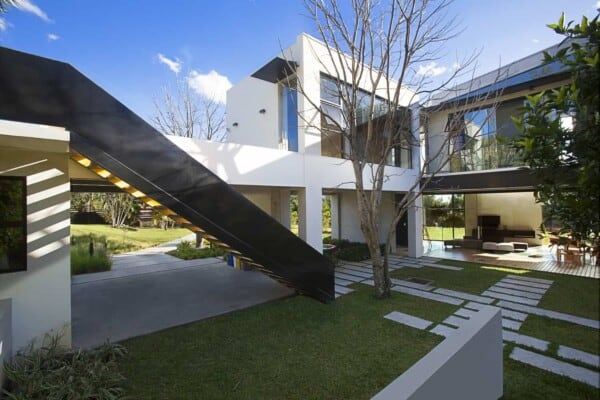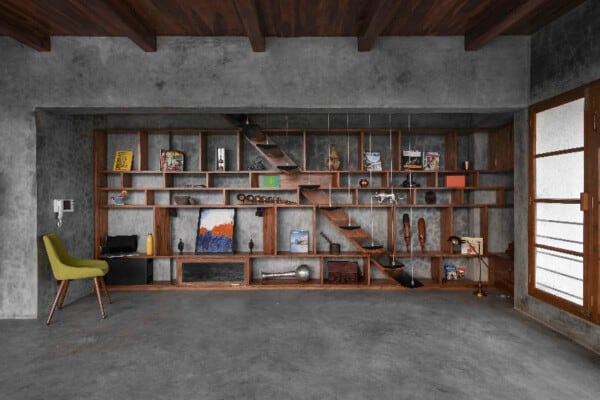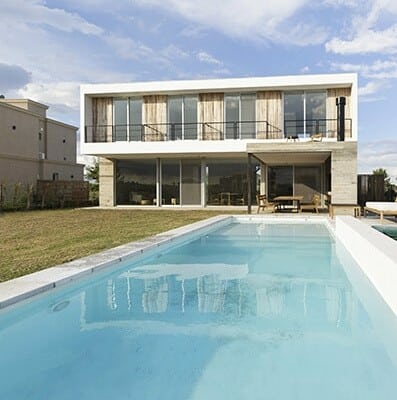Many homeowners think that interior design is what mostly matters when talking about a visually appealing home.
That’s why it’s unsurprising that 68% of US homeowners focus renovations on their house’s interior spaces. They tackled projects such as indoor repainting, new furniture setup, decorating, and room remodeling.
But what about the exterior? Doesn’t it deserve attention too? In fact, one way to enhance a home’s overall look and feel is by syncing exterior and interior paint seamlessly.
Picture this: a house where the exterior and interior shades complement each other perfectly. Doesn’t that create a harmonious and cohesive atmosphere from the outside to the inside of a home?
Let’s further explore the process of syncing interior and exterior shades below by understanding and analyzing the basics of home exterior and interior colors.
We’ll also discuss strategies to help homeowners like you synchronize your house’s inside and outside shades to achieve a remarkable result. Only then can we truly recognize and appreciate how synced shades can transform a home into something more stylish and elegant. Ready? Let’s get right to it.
Understanding the Basics of Color

Without understanding color theory, one can’t effectively coordinate a house’s exterior and interior shades.
Before discussing color-coordinating a home’s exterior and interior spaces, it’d be best to explore the key concepts that will help a homeowner make informed choices first.
It’s also wise to consider product performance, as seen in this Benjamin Moore advance paint review, before spending your hard-earned money on anything. Quality matters most, regardless of which color group you pick.
Here’s what you need to know:
- Complementary colors: Complementary colors, situated directly across from one another on the color wheel, create a striking contrast that is visually stimulating. When used together, they enhance the intensity of each other, making both colors pop and stand out. This dynamic pairing is often used to draw attention and add vibrancy to a space.
- Analogous Colors: Analogous colors lie adjacent to each other on the color wheel, sharing a common primary or secondary color. This proximity yields a serene and comfortable design with a pleasing, coordinated palette. Using analogous colors can establish a restful yet cohesive aesthetic, ideal for spaces meant for relaxation or contemplation.
- Warm and cool colors: Did you also know that colors evoke feelings? Yes, they do. Because of that ability, you can further classify them as warm or cool. Reds, oranges, and yellows are examples of warm colors. How do they impact someone psychologically? They create a sense of energy, vibrancy, and coziness. How about cool colors? They elicit feelings of calmness, serenity, and relaxation. Blues, greens, and purples are some cool colors you can choose from.
Keep those things in mind when planning on what colors to use. Also, use a reliable paint product, such as Benjamin Moore exterior paint, to guarantee color accuracy and quality. Doing so also helps you establish the right desired harmonious mood for each space.
Analyzing the Exterior

It’s also essential to analyze certain exterior elements before discussing outside and inside color syncing.
Here are crucial aspects to consider to ensure a harmonious and visually pleasing coordination:
- Architecture style and era: Does your house follow Victorian or Craftsman architecture? The style can provide valuable cues for knowing the most appropriate color schemes. If your house has Victorian architecture, bold and vibrant shades would be a good idea for ornate décor and bricks. On the other hand, monochromatic or neutral palettes work better for minimalistic modern homes. If you want to enhance the overall aesthetic of your house, starting with the exterior, you should understand your architectural style.
- Surrounding environment and landscape: Another consideration crucial for achieving a cohesive and integrated look is the outdoor surroundings. Expert exterior designers take into account the surrounding environment and landscape when doing their job, and you should too! What are the colors of the neighboring homes? Are there natural elements like trees and plants? Make sure to harmonize your house’s exterior spaces with the environment for a visually balanced and pleasing look. After all, an aesthetically pleasing home from the outside increases a property’s value by up to 11%.
- Climate and weather conditions: Of course, don’t forget about the climate and weather conditions in your area too. Why should they influence your color choices? You may ask. That’s because lighter shades can help reflect heat in warmer climates, which is essential considering that 76% of sunlight becomes heat as it enters your home. On the other hand, darker colors can absorb heat if you live in cooler regions. Also, since certain colors may fade or wear and tear faster in specific weather conditions, understanding your climate conditions can help you select shades that can withstand the elements better. After all, syncing exterior and interior shades isn’t only about aesthetics; it’s also about how to make your spaces more durable!
With these considerations in mind, it’s time to move to how you can coordinate the interior with the exterior shades.
Coordinating with the Interior

Now how do you coordinate the colors of your exterior spaces with your home’s interior? Here are some key considerations and strategies:
- Consistency in color schemes: Of course, the most essential step to take is maintaining consistency throughout the house. Choose colors that complement each other and keep a consistent palette. Consider accent colors from the exterior palette as your inspiration for interior design elements. You can try accent walls or artwork that help create a seamless transition. Even décor pieces can help tie your spaces together and create a sense of continuity. Follow this advice, and you can achieve a seamless transition between the exterior and interior. When people pass through your home’s exterior space to the interior, they’ll get the feeling of a unified and harmonious flow.
- Harmonizing with existing elements: Speaking of décor, take into account the existing elements of your spaces, too, when coordinating colors. What are the undertones and hues present in your flooring materials? What is the material used in your furniture? What is the dominant color of the upholstery? Consider the pillows and curtains too. Make sure that everything matches or complements each other. Note that lighting also plays a crucial role in how shades are perceived. So consider how they affect your chosen colors. Don’t hesitate to make adjustments if necessary. For a more cohesive appearance, coordinate their finishes (e.g., metal finish) with other elements in your house.
With consistent color schemes and harmonized elements, a well-coordinated and visually pleasing connection between your home’s exterior and interior spaces becomes more attainable.
Conclusion
Every homeowner wants a visually appealing and harmonious house, from the exterior to the interior spaces. The problem is that not everyone knows how to achieve it. Fortunately, it doesn’t have to be as complicated as most people think.
The most important thing is that you understand how to use colors. Then follow the guidelines here for analyzing your exterior shades and coordinating them with your interior colors for an overall cohesive design.












